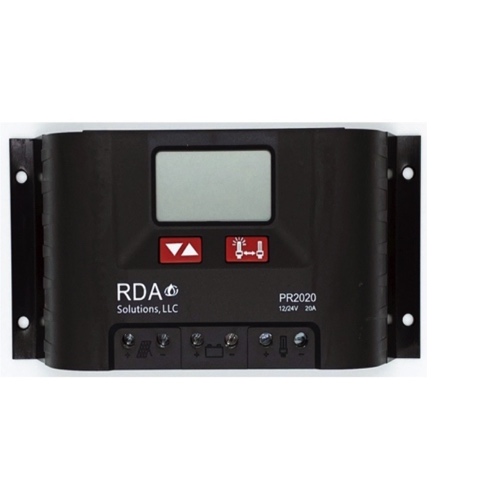RDA Charge Controllers

RDA solar charge controllers are devices that regulate the amount of energy that is supplied to a battery from a solar panel or an array of solar panels. They play a crucial role in ensuring that solar panels are able to charge batteries efficiently and safely.
When solar panels are exposed to sunlight, they produce an electrical current that flows into the battery. Without a solar charge controller, this electrical current could overcharge the battery, causing damage or reducing its lifespan. Solar charge controllers work by monitoring the amount of energy that is being supplied to the battery and regulating it as needed. They prevent overcharging by reducing the amount of energy that is supplied to the battery when it is fully charged.
Most industrial solar setups consist of solar panels, which capture sunlight and convert it into energy. They only convert that energy during the day, so if power is needed at night or when the sun is blocked by clouds, batteries need to be used. The batteries provide power during night time and when the sun is blocked.
How is it determined when power is being provided by the solar panels or the batteries? What happens when the batteries need to be charged, but the electrical load also requires power? This is where a charge controller comes into play. The charge controller is designed to manage the power that comes from the solar panels and distribute that power to the different loads that need it. Depending on the complexity of the charge controller, it may perform other functions, but its most basic function is to manage and direct power where it is needed in the system.
For example, there are two solar panels wired in series, providing 24 volts of DC power. The electrical load in this case is a small PLC, a radio and a ethernet switch used for communication. This is a common remote SCADA setup in many different industrial scenarios and it is important to keep this site running day and night. In order for this to happen, batteries must be used to provide power at night and when the sun is blocked by clouds. The size of the batteries will depend on the load and how long emergency standby power is required. The batteries need to stay charged and the electrical components in the cabinet must not run out of power. The charge controller has the ability to monitor the amount of charge in the batteries and keep them charged while also providing power to the electrical load. During the day the charge controller might be sending all of the power from the solar panels to the electrical load and none to the batteries, or it may be sending some directly to the electrical load and some to the batteries to charge. It all depends on the needs of the system. At night, the charge controller will detect no power coming from the panels and redirect the battery power to the electrical load to keep the components running as expected.

